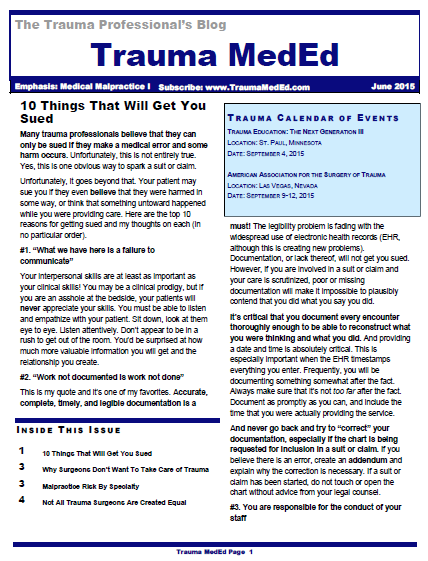Most patients with major traumatic injuries are handled in a very systematic way by both EMS and trauma centers. We have routines and protocols designed to provide rapid, quality care to these individuals. But over the years, I’ve begun to appreciate the fact that there is a very small subset of these patients who are different.


I term these patients as having an “egg timer injury”. These are patients who have only a certain number of minutes to live. This fact requires us to change the usual way we do things in order to save their lives or limbs. The usual routine may be too slow.
And unfortunately, no one can tell us exactly how many minutes are left on the timer. We only know that it’s ticking. Here are some examples of such injuries:
- Pericardial tamponade
- Penetrating injury to the torso with profound hypotension
- Orbital compartment syndrome
In each case, speed is of the essence. What can we do to decrease the time to definitive intervention? For prehospital providers, you may need to bypass a closer hospital that might not have the necessary resources at a particular time of day. Once at the hospital, the patient may need to bypass the emergency department and proceed straight to the OR. Or you may need to do a lateral canthotomy yourself, rather than waiting for an ophthalmologist to drive in only to have the patient lose their vision because of the delay.
Bottom line: Remember that protocols are not necessarily etched in stone. They will cover 99.9% of cases you see. But that remaining 0.1%, the patients with the “egg timer injury”, will require you to think through what you know about the patient at the time, and make decisions about their care that may have a huge outcome on their life or livelihood. And as always, if you find that you must do things differently in the best interest of your patient, be sure to document what you knew and your thought processes thoroughly so you explain and/or justify your decision-making when you are invariably asked.


